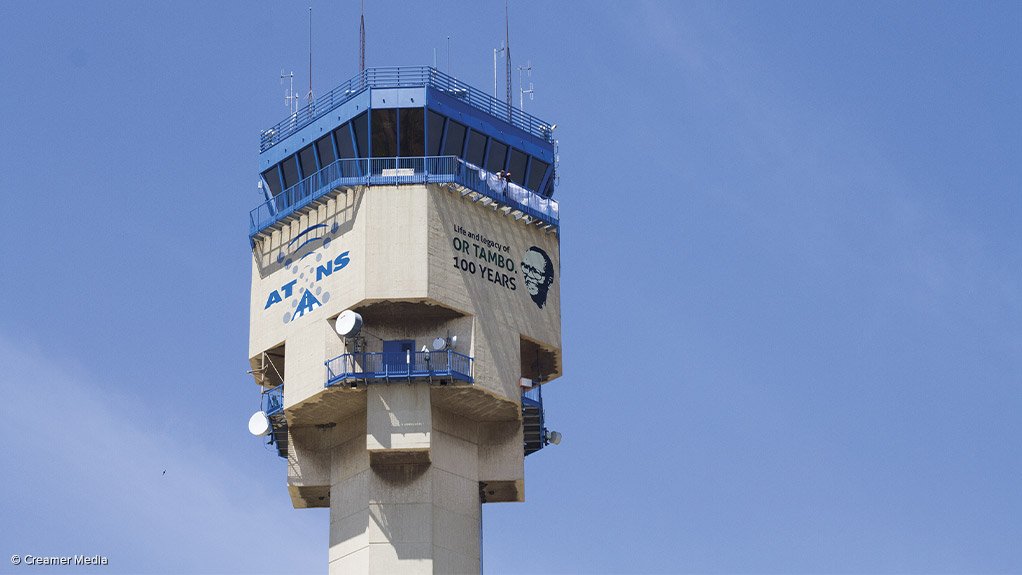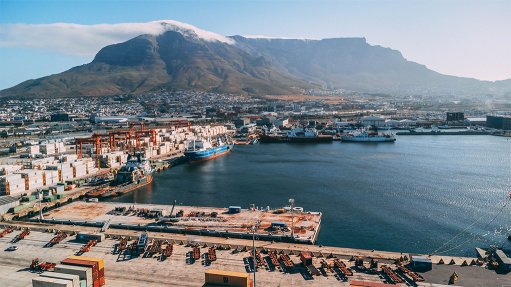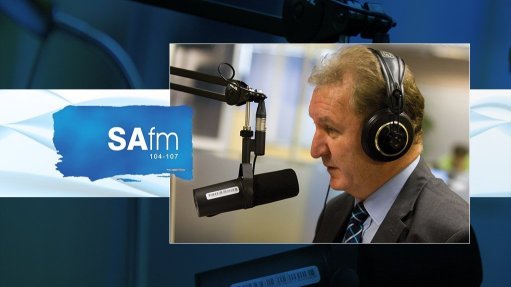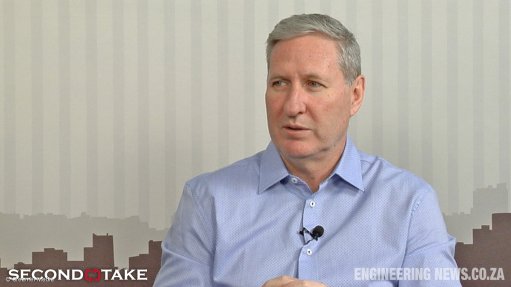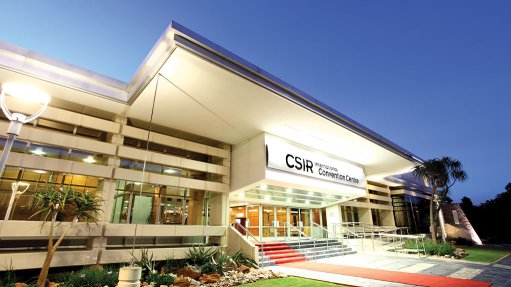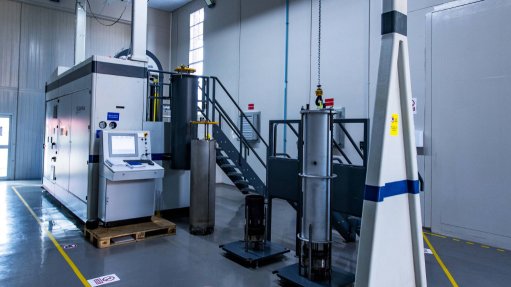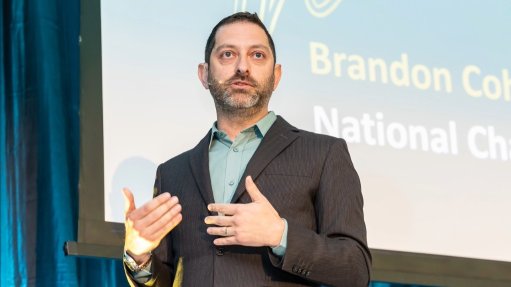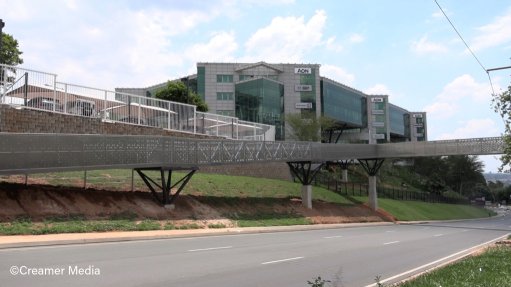ATNS cites global shortage of flight procedure designers as key reason for operational challenges
State-owned entity Air Traffic and Navigation Services (ATNS) has identified a shortage of skilled flight procedure designers as the primary challenge affecting the maintenance of South Africa’s air traffic procedures, acting CEO Matome Moholola said at a briefing, in Johannesburg, on October 29.
“The reality is that we are given five years to maintain flight procedures in the country and we have not been able to comply with that requirement in the last five to ten years. It wasn’t out of a lack of trying. We have tried quite hard. Unfortunately, things just couldn’t work out for ATNS,” he said, noting that it was unable to keep up with its obligations owing a severe shortage of suitably skilled flight procedure designers.
Moholola said the shortage was both national and global and that ATNS had been attempting to operate within extremely limited resources.
The organisation has maintained 388 air traffic procedures with only two permanent staff and five contracted personnel. Several of these contractors are former ATNS employees who have moved abroad. Two are now in the United Arab Emirates (UAE), one in the UK and two remain locally.
“You will understand that we are unable to compete with the oil money in the UAE or with the dollar-based salaries abroad. Given the scarcity of the skills they possess, employees would naturally consider the best offers elsewhere, despite our best attempts to retain them,” Moholola said.
He said ATNS had developed a pipeline of seven trainees at various stages of training in response to the shortage. Many will be fully qualified and begin work next year, which the organisation hopes will alleviate the staffing constraints.
“We believe that with the pipeline we have, we should be able to get there,” he said.
The skills shortage has had tangible consequences for operational performance. Out of the 388 national procedures, only 240 (about 61%) are currently active and approved. When excluding 27 obsolete routes that are no longer flown, the effective compliance rate rises to 66%, meaning that nearly one-third of the mandated procedures have not yet been fully maintained.
While some procedures have been suspended, Moholola emphasised that this was not an indication of inactivity.
“While we have had to suspend quite a lot, it doesn’t necessarily mean that there wasn’t work happening. There was work happening, there was maintenance happening. But when you have a limited pool, it just could not cope with the 388 procedures,” he said.
Moholola made a public apology for the organisation’s inability to maintain its procedures effectively over the past few years.
“We take this opportunity to express our unconditional apology to the broader public, including our customers, for the inconvenience that resulted from our recent operational challenges.
“Furthermore, we want to express our appreciation for their patience and understanding as we navigate through this storm,” he said.
In terms of the broader operational context, ATNS’s total assets have increased from R2.7-billion to R3.1-billion in the last financial year, while revenue rose by 4% to R1.8-billion.
However, earnings before interest, taxes, depreciation and amortisation declined by 22.9% to R185.6-million. Profit for the period remained steady at R22.3-million, compared with R23.3-million the previous year.
Moholola added that ATNS was also in the process of upgrading its air traffic infrastructure, with R535-million allocated for communication systems and R1.6-billion for radar and surveillance upgrades over a 12-month period.
Of this, R1-billion has already been approved by the board and is in various stages of contracting with service providers.
On safety, Moholola reported continued progress. The number of safety audit findings has risen to 1 312, with 77% closed and no overdue items, compared with 606 findings at the end of February, 44% of which had been closed at the time and 15% overdue.
“This just talks to the improvements that we have been able to put in place to ensure that South Africa remains safe and there are no concerns,” he said. The agency has recorded no accidents attributable to ATNS, and its safety management maturity rating is 81%, above the global average of 75%.
ATNS is continuing to address its staffing and skills challenges, particularly at major airports. While national staffing sits at 82% of the target complement, OR Tambo International Airport remains critically below the recommended levels, with tower coverage at 67%, approach at 57%, and area control at 61%. Moholola noted that staffing at Cape Town International Airport remains above the 80% threshold.
“We are tracking OR Tambo closely because this is the busiest airport, and the very fact that it takes time to get trained personnel into positions means we monitor it monthly and quarterly,” he said.
Projections suggest that by the end of the year, staffing will improve to 77% for the tower, 63% for approach and 68% for area control at OR Tambo.
Moholola concluded that while ATNS had made measurable progress in operational performance, financial stability, and safety, the skills shortage remained the central constraint on fully restoring and maintaining the country’s air traffic procedures. The organisation continued to focus on developing its trainee pipeline, retaining skilled personnel, and upgrading systems to improve efficiency and safety.
“We are fully aware that we are not out of the woods yet, and we will not put our foot off the pedal, but it is important that we take a moment and pause and reflect on the progress and acknowledge the tremendous work done by our employees,” Moholola said.
Article Enquiry
Email Article
Save Article
Feedback
To advertise email advertising@creamermedia.co.za or click here
Comments
Press Office
Announcements
What's On
Subscribe to improve your user experience...
Option 1 (equivalent of R125 a month):
Receive a weekly copy of Creamer Media's Engineering News & Mining Weekly magazine
(print copy for those in South Africa and e-magazine for those outside of South Africa)
Receive daily email newsletters
Access to full search results
Access archive of magazine back copies
Access to Projects in Progress
Access to ONE Research Report of your choice in PDF format
Option 2 (equivalent of R375 a month):
All benefits from Option 1
PLUS
Access to Creamer Media's Research Channel Africa for ALL Research Reports, in PDF format, on various industrial and mining sectors
including Electricity; Water; Energy Transition; Hydrogen; Roads, Rail and Ports; Coal; Gold; Platinum; Battery Metals; etc.
Already a subscriber?
Forgotten your password?
Receive weekly copy of Creamer Media's Engineering News & Mining Weekly magazine (print copy for those in South Africa and e-magazine for those outside of South Africa)
➕
Recieve daily email newsletters
➕
Access to full search results
➕
Access archive of magazine back copies
➕
Access to Projects in Progress
➕
Access to ONE Research Report of your choice in PDF format
RESEARCH CHANNEL AFRICA
R4500 (equivalent of R375 a month)
SUBSCRIBEAll benefits from Option 1
➕
Access to Creamer Media's Research Channel Africa for ALL Research Reports on various industrial and mining sectors, in PDF format, including on:
Electricity
➕
Water
➕
Energy Transition
➕
Hydrogen
➕
Roads, Rail and Ports
➕
Coal
➕
Gold
➕
Platinum
➕
Battery Metals
➕
etc.
Receive all benefits from Option 1 or Option 2 delivered to numerous people at your company
➕
Multiple User names and Passwords for simultaneous log-ins
➕
Intranet integration access to all in your organisation



